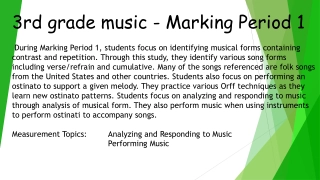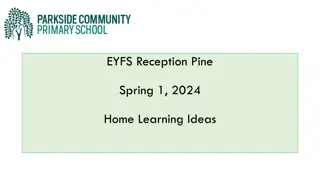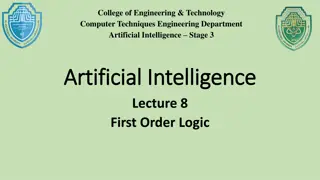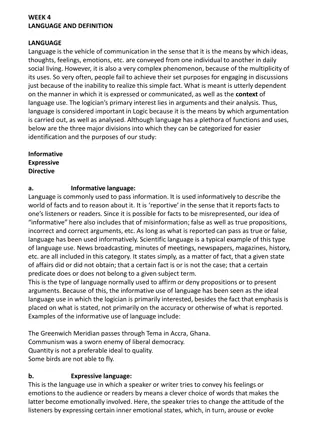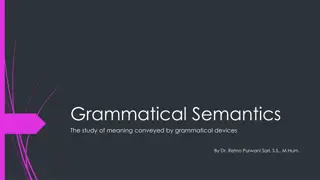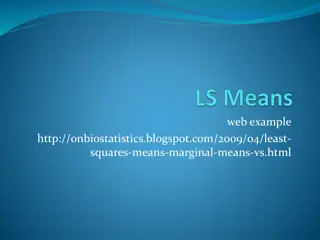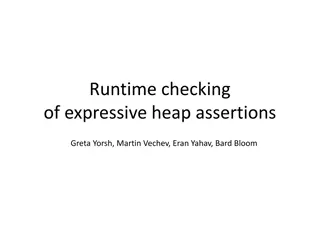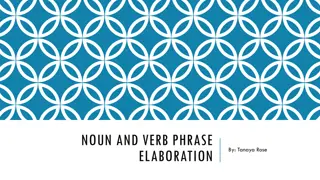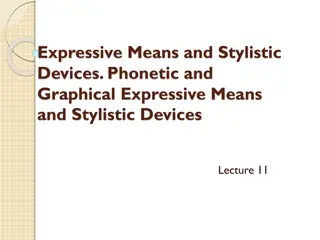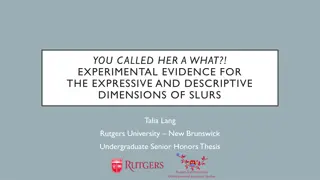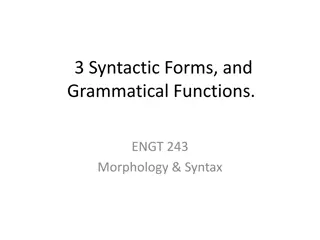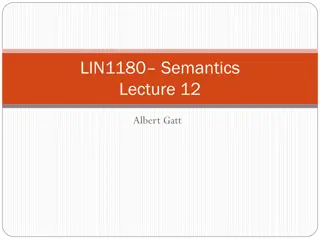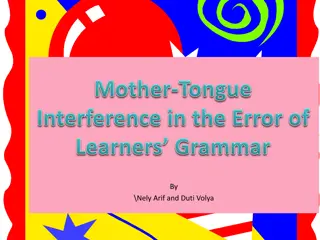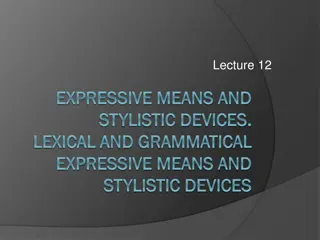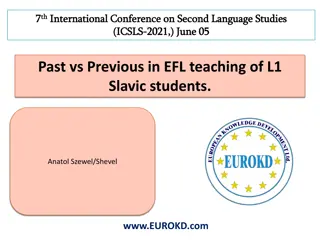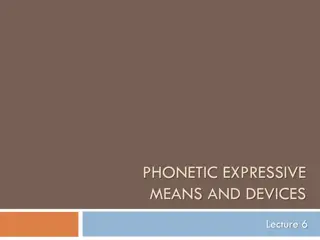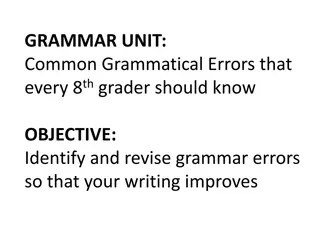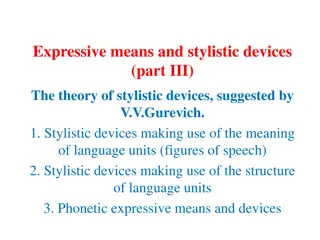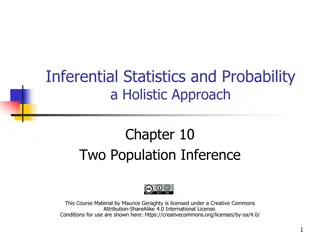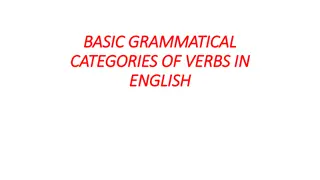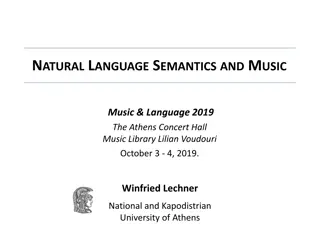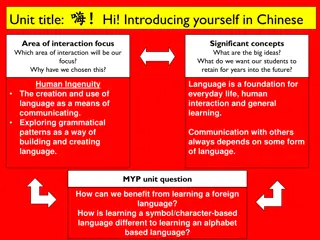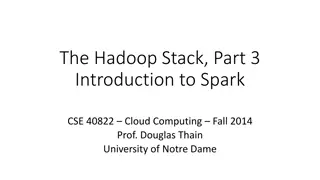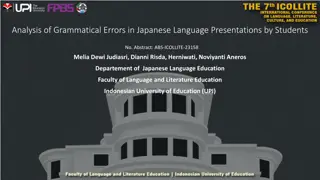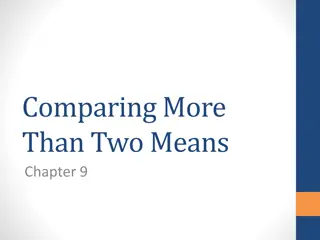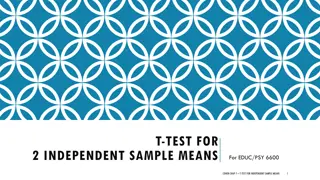Overview of 3rd Grade Music Marking Periods
Third-grade students engage in a comprehensive music curriculum across four marking periods, focusing on various aspects such as identifying musical forms, meter, reading melodies, notating rhythms, and performing with instruments like the soprano recorder. They develop skills in analyzing, respondi
3 views • 4 slides
Civil Applications: Managing Live Cases Webinar Insights
Gain valuable insights on managing live civil cases through the "Help Us to Say Yes" webinar focusing on civil applications, means re-assessments, merits, and more. Learn about processes such as means re-assessment, amending certificates, means representations, and applying for prior authority. Disc
0 views • 41 slides
EYFS Reception Pine Spring 1 (2024) Home Learning Ideas
Explore a variety of home learning activities for EYFS Reception Pine students, including literacy, numeracy, physical development, and expressive arts. Engage in songs, videos, letter formations, and more to enhance skills and knowledge across different areas of development.
1 views • 5 slides
Insights into Theoretical English Grammar
The theoretical English grammar delves into the subject matter of grammar, including systemic conceptions, grammatical forms, categories, paradigms, and morphological means. It discusses the constituent parts of language – phonology, lexicology, and grammar. The grammatical structure covers morpho
7 views • 26 slides
Understanding First-Order Logic in Artificial Intelligence
Delve into the realm of first-order logic in artificial intelligence as a knowledge-based agent represents and deduces actions in its operating world. Explore the limitations of propositional logic and the expressive power of first-order logic, along with syntax, semantics, and models in logical lan
3 views • 27 slides
An Exploration of Stylistics in Linguistics: Expressive Means and Stylistic Devices 2. Stylistics as a branch of linguistics examines expressive means and stylistic devices which enhance the emotive and aesthetic qualities of language. These include
Stylistics, Linguistics, Expressive Means, Stylistic Devices, Language
5 views • 25 slides
Introduction to Projective Diagnostic Assessment
Projective diagnostic assessment is a technique used to reveal subconscious psychological states by presenting ambiguous stimuli for individuals to project their thoughts and feelings. This method helps uncover unconscious conflicts and allows for personality assessment through the interpretation of
4 views • 12 slides
Understanding Language: Informative, Expressive, and Directive Uses
Language serves as a vital medium for communication, allowing the conveyance of ideas, thoughts, and emotions. It is a complex phenomenon with diverse uses. This text delves into the three major divisions of language use - informative, expressive, and directive. Informative language conveys facts, w
3 views • 6 slides
Understanding Grammatical Semantics in Linguistics
Grammatical semantics is the study of meaning conveyed by grammatical devices, exploring the semantics of syntax and morphology. By analyzing sentences about a mouse in the countryside, propositions are identified through a four-step analysis, revealing how meaning is constructed through linguistic
0 views • 17 slides
Understanding Means and LS Means Calculation in Statistics
Explanation of how means and least squares means (LS Means) are calculated in statistics. Describes the process of calculating means for different treatments and centers, as well as deriving LS Means through an iterative process, including handling empty cells.
1 views • 11 slides
Runtime Checking of Expressive Heap Assertions
Motivated by the unreliability of large software systems due to concurrency bugs and limitations of static analysis, the goal is to enable runtime analysis of deep semantic properties with low overhead. This involves checking expressive heap assertions at runtime with minimal impact on performance,
0 views • 15 slides
Understanding Grammatical Development in Speech-Language Pathology
Explore a broader perspective of grammatical development in speech-language pathology focusing on noun and verb phrase elaboration. Learn about identifying and elaborating noun phrases, substitution tests, and the elements of an elaborated noun phrase. Gain insights into clinical approaches and lang
0 views • 28 slides
Understanding Expressive Means and Stylistic Devices in Language
Expressive means and stylistic devices play a vital role in intensifying language utterances, encompassing phonetic, morphological, lexical, word-building, phraseological, and syntactical forms. These tools help evoke emotions, logical emphasis, and additional meaning in communication. By utilizing
0 views • 13 slides
Understanding Changes in Aspect: Workshop Highlights by Elly van Gelderen
Explore the systematic changes in verb meaning due to aspect and theta-roles, the influence of lexical and grammatical aspect on each other, and the significance of telic, durative, and stative aspects in language. Discover insights on children's early awareness of aspectual verb classes and their c
0 views • 77 slides
Exploring Grammatical Gender in Language Across Cultures
Explore the concept of grammatical gender, the sorting of nouns into classes reflected in words associated with them. Discover how gender varies globally, impacting sound, form, and meaning. Dive into the fascinating relationship between grammatical gender and human cognition.
0 views • 36 slides
Correcting Grammatical Errors - Bellwork Activities 8
Practice correcting grammatical errors in sentences with these Bellwork activities. Identify and fix errors in each sentence provided along with the learning goal for each task. Improve your grammar skills by correcting errors related to subject-verb agreement, pronoun usage, punctuation, and more.
0 views • 11 slides
Exploring the Dimensions of Slurs: Expressive vs. Descriptive Aspects
Investigating the dual nature of slurs, this study delves into the expressive and descriptive dimensions of derogatory terms. Through experimental evidence and linguistic analysis, it explores how slurs convey both speaker-centered emotions and objective information about targeted groups. The resear
0 views • 45 slides
Understanding Grammatical Functions in Syntax
The study of syntactic forms and grammatical functions is crucial in analyzing sentence structures. This includes identifying subjects, objects, modifiers, and predicates. Various tests can be employed to determine grammatical functions, such as agreement, tag questions, and subject-auxiliary invers
0 views • 40 slides
Common Grammatical Errors in Daily Life
Explore a collection of daily-life scenarios riddled with common grammatical mistakes. From pet ownership and sports events to social gatherings, witness instances where simple language errors lead to confusion. Each image depicts a snippet of conversation highlighting incorrect word usage and sente
0 views • 6 slides
Understanding Tense and Grammatical Aspect in Language
This lecture delves into the intricacies of tense and grammatical aspect, exploring concepts such as progressive/non-progressive, perfective/imperfective aspects across languages. It discusses the interaction between grammatical aspect and lexical aspect (Aktionsart), focusing on tense as a deictic
0 views • 43 slides
Understanding Grammatical Errors Caused by Mother-Tongue Interference in English Learners
Young English learners face challenges in language acquisition, resulting in various grammatical errors influenced by their native language. Analyzing these errors can aid in developing effective teaching strategies. The study explores errors like incorrect auxiliary verb usage and pronoun confusion
0 views • 14 slides
Correcting Grammatical Errors in Sentences - Bellwork 7
In this task, you will work on correcting various grammatical errors in sentences provided in Bellwork 7. The sentences contain errors related to punctuation, homophones, verb agreement, and more. By identifying and rectifying these errors, you will enhance your understanding of grammar rules and se
0 views • 11 slides
Understanding Lexical and Grammatical Expressive Means in Stylistic Devices
The lecture discusses various lexical and grammatical expressive means in stylistic devices, such as metaphor, personification, allusion, metonymy, synecdoche, irony, epithet, and oxymoron. These tools allow for creative and vivid expressions in language by playing with different meanings and associ
0 views • 22 slides
Challenges in EFL Teaching for Slavic L1 Learners
Slavic L1 learners of English face challenges due to the transfer of their native language's grammatical system. This study explores how the wording of grammatical explanations in English impacts students' conceptualization of grammar. It emphasizes the importance of proper instruction and highlight
0 views • 19 slides
Understanding Phonetic Expressive Means and Devices in Language
Phonetic expressive means and devices are utilized to enhance the acoustic effect of speech, emphasizing the utterance and evoking emotions in the audience. These tools come into play both in oral and written forms of communication, directly through intonation and stress in spoken language and indir
0 views • 36 slides
Understanding English Phrase Structure: Analysis and Examples
Explore the morphosyntactic analysis of English phrases and the grammatical hierarchy, delving into sentence constituents, clauses, phrases, words, and morphemes. Learn about different types of phrases, their structures, and elements like modifiers, headwords, and grammatical markers, with illustrat
0 views • 30 slides
Grammar Unit: Common Grammatical Errors & Dangling Modifiers
Learn about common grammatical errors such as misplaced modifiers and dangling modifiers in this educational unit designed to help 8th graders identify and revise errors to enhance their writing. Examples and explanations provided guide readers to improve their grammar skills and avoid ambiguity in
0 views • 13 slides
Exploring Stylistic Devices: Metaphor, Metonymy, Repetition, and More
Delve into the theory of stylistic devices proposed by V.V. Gurevich, covering figures of speech, structural devices, and phonetic expressive means. Discover examples of metaphors, metonymy, repetition techniques like anaphora and climax, along with their impact on language usage and expression.
0 views • 22 slides
Comparing Population Means: Inference Study
This chapter delves into comparing two population means using various statistical models such as independent sampling and dependent sampling. It covers methods like the two-sample Z-test, pooled variance t-test, and unequal variances t-test. Additionally, it discusses the concept of a random variabl
0 views • 41 slides
Understanding the Six Grammatical Categories of Verbs in English
Explore the six grammatical categories of verbs in English, including person, number, aspect, tense, mood, and voice. Learn how each category influences the structure and meaning of sentences with detailed examples.
0 views • 11 slides
Exploring Algorithm Performance in Data Set 1 with LDA, CART, and K-Means
Utilizing Linear Discriminant Analysis (LDA), Classification and Regression Trees (CART), and K-Means algorithms on Data Set 1. CART training involved tuning the number of leaves for optimal performance, while LDA explored covariance variations and discriminant types. The K-Means method was applied
0 views • 15 slides
Exploring the Relationship Between Language and Music
This presentation delves into the connection between language and music, examining the nuances of linguistic expressions, syntax, and meaning in both domains. It contrasts the formal structure of music with the combinatorial nature of natural language, discussing aspects such as denotation, referenc
0 views • 35 slides
Exploring Language and Cultural Exchange Through Chinese Greetings
This unit focuses on the benefits of learning a foreign language, particularly a character-based language like Chinese. Students delve into grammatical patterns, communication skills, and cultural exchanges through practicing greetings, writing conversations, and role-playing activities. The unit ai
0 views • 6 slides
Statistical Analysis of Treatment Means in Experimental Studies
The content discusses various statistical methods to analyze treatment means in experimental studies, including KNNL models, main effects plots, inference for individual treatment means, comparing two treatment means, and contrasts among treatment means. It covers topics such as parameter estimation
0 views • 25 slides
Introduction to Spark in The Hadoop Stack
Introduction to Spark, a high-performance in-memory data analysis system layered on top of Hadoop to overcome the limitations of the Map-Reduce paradigm. It discusses the importance of Spark in addressing the expressive limitations of Hadoop's Map-Reduce, enabling algorithms that are not easily expr
0 views • 16 slides
Universal Design for Learning (UDL) and Multiple Means of Representation
Explore the concepts of Universal Design for Learning (UDL) and Multiple Means of Representation in education. Learn about the importance of representation in learning, how to apply multiple means of representation, and practical strategies to enhance learning inclusivity. Engage in discussions and
0 views • 34 slides
Analysis of Grammatical Errors in Japanese Language Presentations by Students
This research focuses on identifying and analyzing the types of grammatical errors that occur in Japanese language presentations by students. The study aims to help students recognize and rectify errors in particle and verb usage to enhance their Japanese language proficiency and presentation skills
0 views • 9 slides
Simulation-Based Tests for Comparing Multiple Means
Simulation-based tests provide a method for comparing multiple means by assuming no association between explanatory and response variables. Null distributions are created by shuffling data and calculating differences in means. The observed differences in sample means are then compared to the null di
0 views • 45 slides
Understanding Standard Deviation and Standard Error of the Means
Standard deviation measures the variability or spread of measurements in a data set, while standard error of the means quantifies the precision of the mean of a set of means from replicated experiments. Variability is indicated by the range of data values, with low standard deviation corresponding t
0 views • 7 slides
Introduction to Independent Sample Means T-Test in Educational and Psychological Research
Independent Sample Means T-Test is a statistical analysis used to compare the means of two independent groups to determine if there is a significant difference between them. This test is commonly used in educational and psychological research to assess the effectiveness of interventions or treatment
0 views • 21 slides
